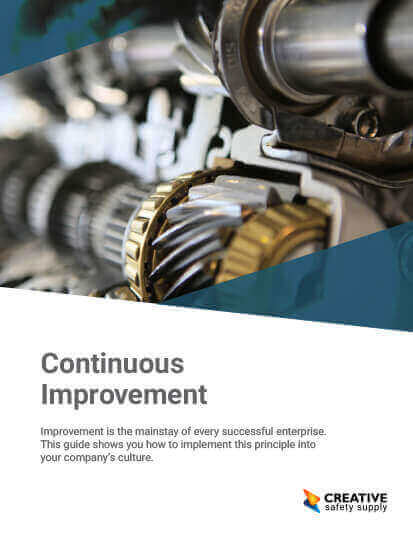
With its origin tracing back to Japan, ‘Kaizen’ translates to a term for changing for the better, the basis of the continuous improvement philosophy. The aim of the model is to enhance ongoing production processes and equipment by eliminating waste and maximizing assets to improve daily operations.
When implemented effectively, the Kaizen model offers an array of benefits to an organization by lowering costs, increasing productivity, improving communication, and creating a better company culture as employee satisfaction increases. As well as internal benefits, customer satisfaction also sees improvements as customers can enjoy the improved quality and a more reliable supply.
Introducing the Kaizen Model
Changes are not going to be seen overnight, but that doesn’t mean the Kaizen model can be implemented in small and manageable chunks. The Kaizen model is a continuous improvement philosophy so requires an ongoing plan that needs to be undertaken on a long-term basis. In order to achieve success, here are some key components of the model to implement within operations:
Empower employees
Employees are the heart of every organization and are the key to success, with employee satisfaction being shown to have a significant impact on production outcomes. Engaging team members is a powerful approach that not only creates a strong team dynamic but allows all members of staff to take ownership of their roles, suggesting any potential improvements that could be made. By listening to those from all roles within an organization, a well-rounded understanding of the existing processes can be gained in order to establish an effective plan for improvement.
Start off small
Breaking down each task into smaller tasks is a tried and tested way to succeed in a goal. Not only do incremental steps make the process appear much more manageable to achieve, but they reduce the risk of hold-ups happening since the project works off more frequent deadlines, allowing space for any unexpected delays along the way. Instead of getting fixated on an end goal, the smaller changes can create progress from day one as the source of issues is addressed gradually, creating a more manageable workload for everyone involved.
Introduce standardization
The Kaizen model is about ongoing improvements, so any changes made need to be sustainable. Once improvements to a process have been made, they should be able to be made every time so the results can last and a new standard can be set, forming the basis of a new process that is taught to all employees within the business. This approach not only improves existing processes but avoids problems occurring from miscommunication or disagreements among employees who may have different ways of carrying out a particular task.
Get the go-ahead
The leaders of the organization must all understand and agree on the importance of the Kaizen model, being committed to implementing continuous improvements and following through with any agreed changes. All employers and employees should be mutually support each other in order for the philosophy to be able to work and a thorough understanding should be consistent across all levels of the organization. The company culture should be reflected in the expectations, with all employees sharing the end goal and being able to maintain steady efforts in order to see the improvements be made, adopting a mindset that can support their actions.
Monitor improvements
Documenting the process when changes are made is beneficial in order to be able to analyze the performance before and after improvements have been implemented. It can be easy for employees to subconsciously revert back to their old ways, so let the data speak and keep an eye on whether the implemented changes are being kept up or whether they may not be sustainable in the long term. In order to measure performance accurately, select metrics that quantify the desired improvements and record data such as cost, customer satisfaction, resource utilization, and staff efficiency. Measuring the performance of these KPIs against existing benchmarks allows you to conclude whether the Kaizen model is providing the desired results or whether an alternative approach is beneficial.
The Ongoing Impact of the Kaizen Model
The Kaizen model can definitely lead to short-term wins, but the main goal is to strive for continuous improvements, continuing to analyze processes and make changes for the better. Once a problem has been identified, however minor or large scale, solutions can be found and implemented to help the business continue to grow.
Observation is a huge part of the philosophy, encouraging business owners to take a step back, slow down, and look at their business from a different perspective. Once the Kaizen model has been learned and tested, naturally observation levels will increase and areas for waste in a business will become more recognizable. This new mindset can be powerful and encourage new ideas to be tested, grabbing opportunities and working towards a vision. By sharing these visions and boosting the morale of all other employees, day-to-day operations can see vast improvements from both an employee perspective, as well as a business productivity perspective.
Similar How-To's
- How to Standardize Workplace Processes
- How to Achieve Zero Defects
- How to Perform a PDCA Cycle
- How to Follow Lean Manufacturing Methods
- How to implement Kaizen According to Industry Leaders
- How to Establish 5S in the Workplace
- How to Maintain Total Productive Maintenance Ideals
- How to Perform a Gemba Walk
- How to Get Started with Six Sigma

